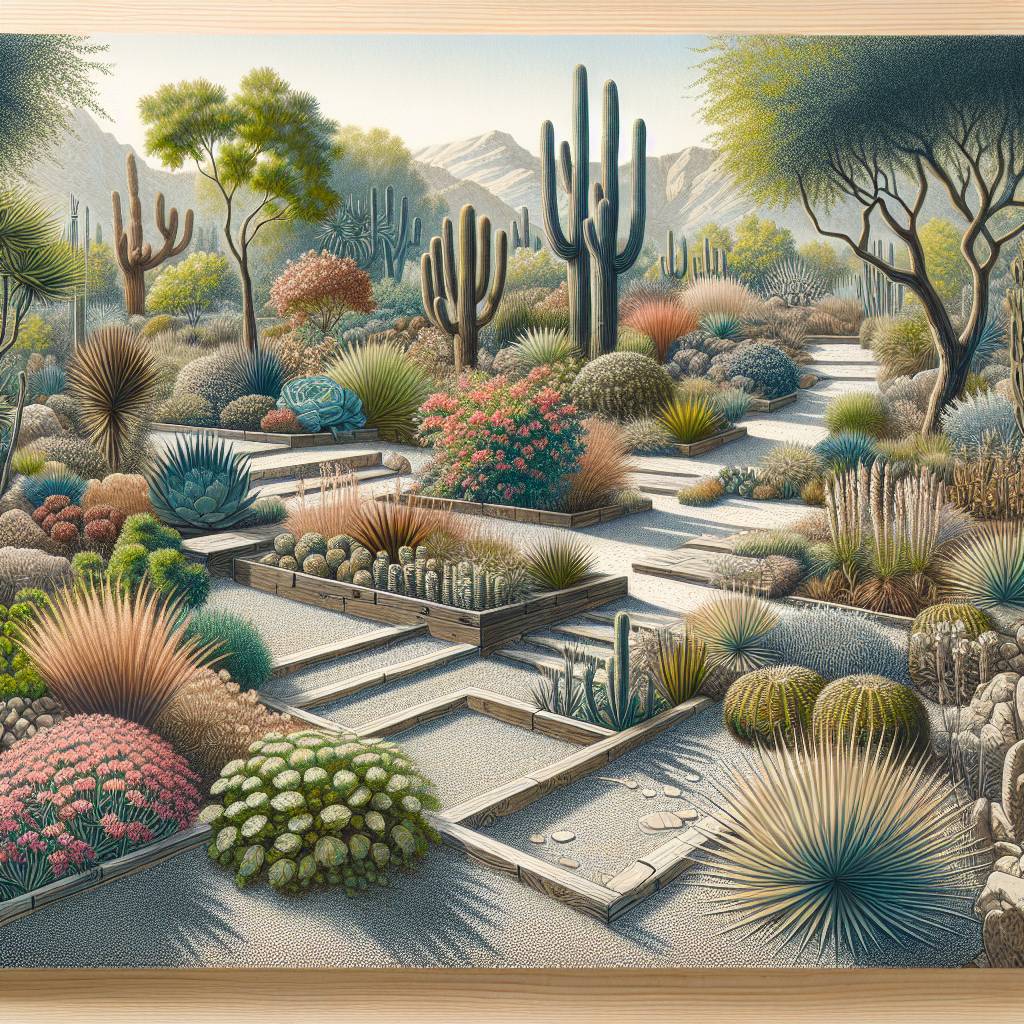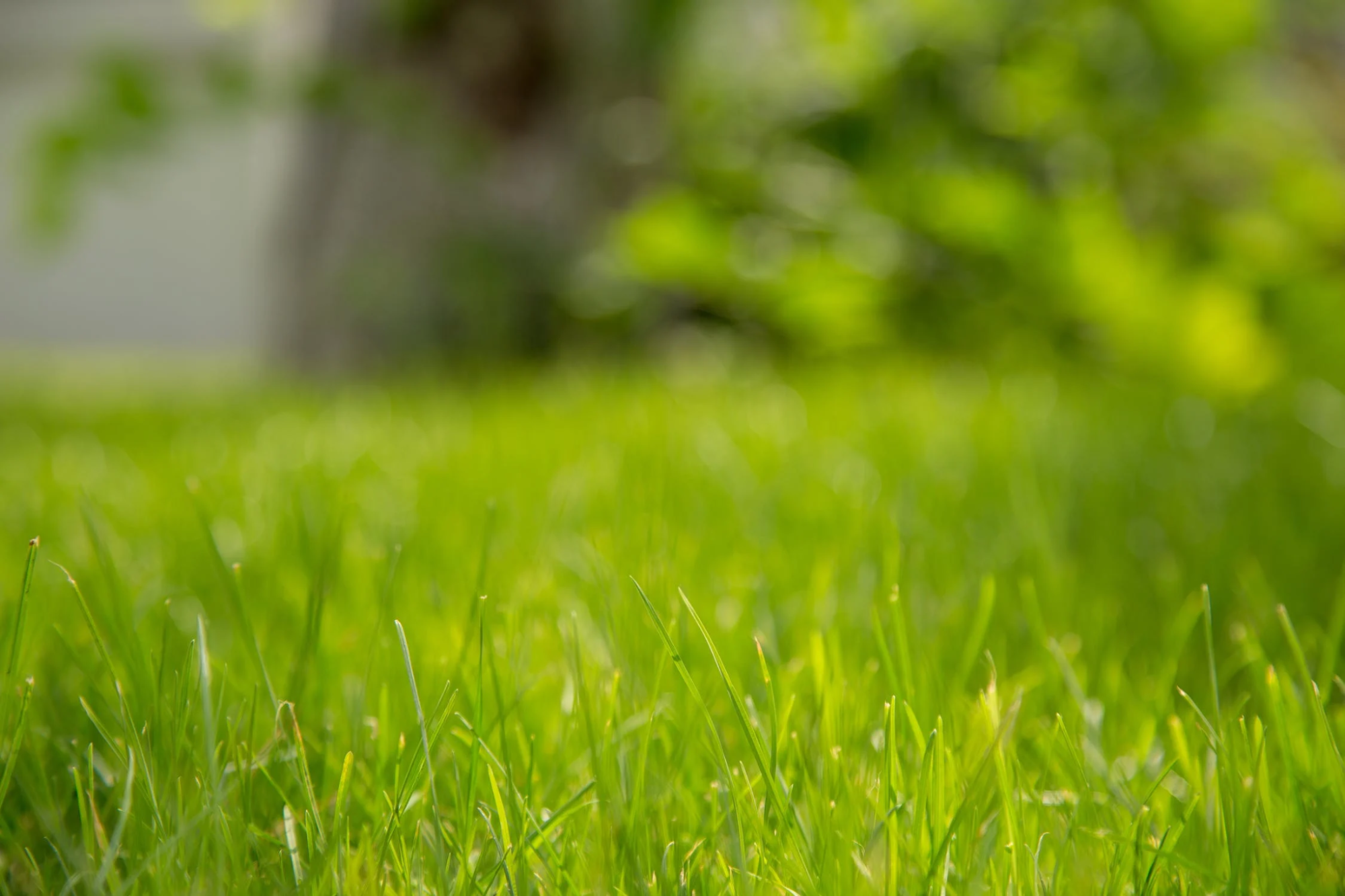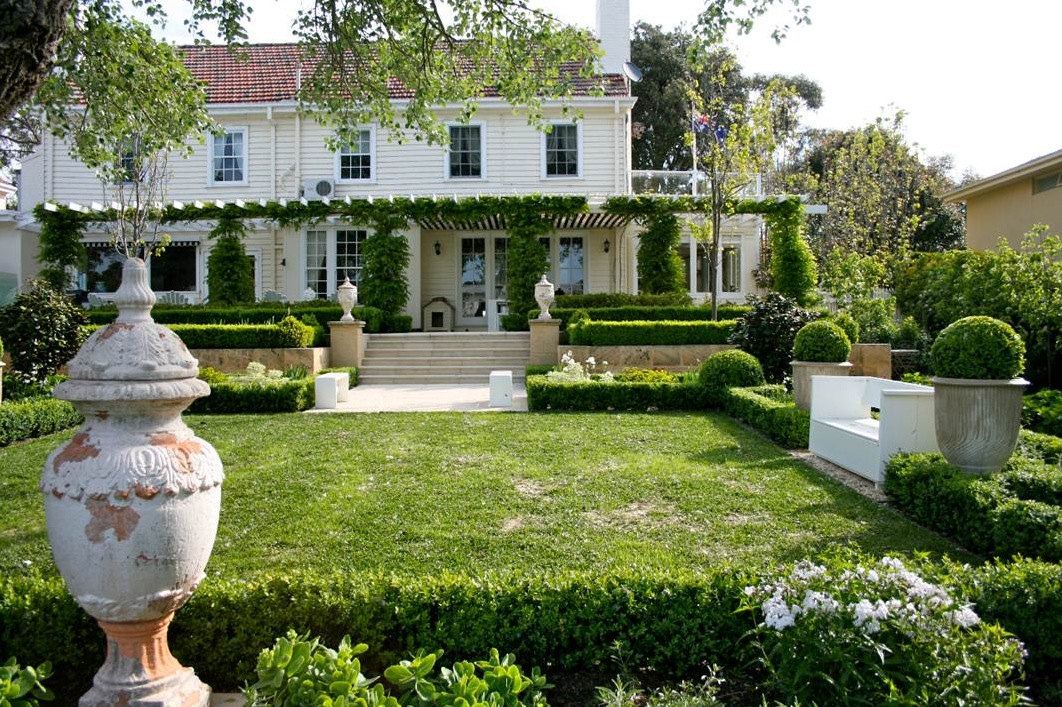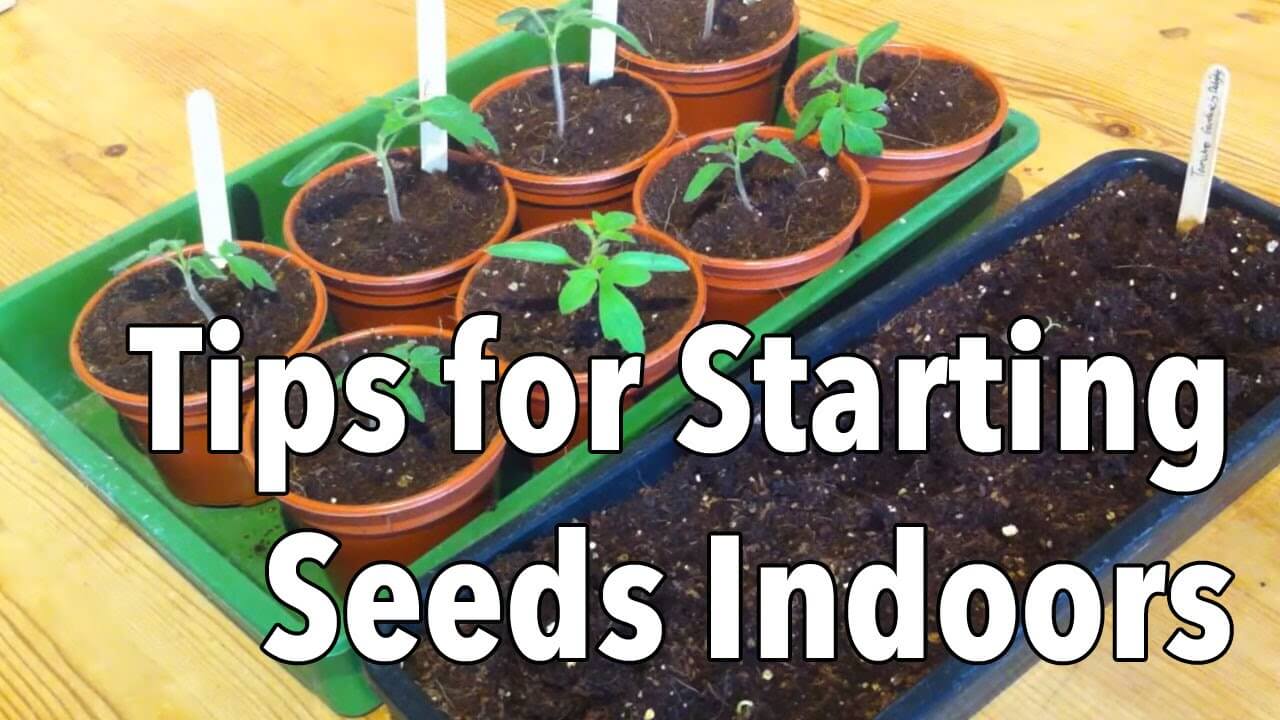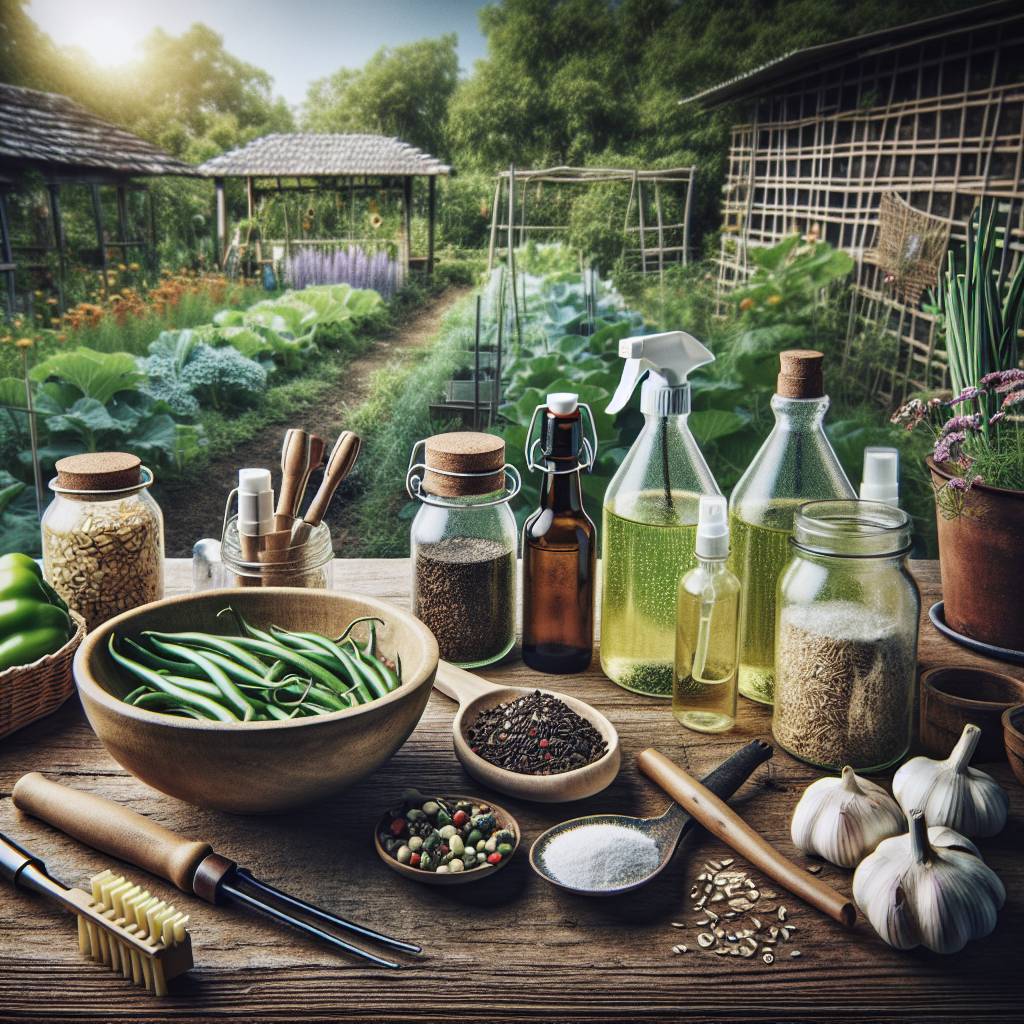Dreaming of a stunning garden that thrives with minimal water? Imagine lush foliage, vibrant blooms, and an eco-friendly haven. But how can you achieve this in a dry climate or simply by conserving water? The answer lies in creating a captivating dry garden. From resilient succulents to drought-tolerant grasses, the plant choices are vast. Pair these with strategic design elements such as gravel pathways and rock features for an aesthetically pleasing landscape that’s easy to maintain.
With our guide, you’ll uncover the secrets to transforming your outdoor space into a breathtaking oasis while embracing sustainable practices with water feature, trees. Ready to delve into the world of low-water gardening? Let’s explore the art of creating a mesmerizing dry garden that not only survives but thrives in arid conditions.
Key Takeaways
- Understanding the principles of dry gardens is essential for creating a successful and sustainable garden design.
- When planning your dry garden, consider factors such as soil type, sunlight exposure, and water availability to ensure the best results.
- Select drought-resistant plants that thrive in arid conditions, such as succulents, cacti, and Mediterranean herbs, to minimize water usage and maintenance efforts.
- Design your dry garden with a focus on texture, color, and plant combinations to create visual interest and harmony within the space.
- Implement essential design tips, such as using gravel or mulch for water retention and incorporating hardscape features like pathways and rock formations for low-maintenance appeal.
- Enhance the aesthetics of your dry garden by incorporating elements such as ornamental grasses, decorative containers, and artistic focal points to add visual appeal and personality to the space.
Understanding Dry Gardens
Defining Dry Gardening
Dry gardening is all about creating beautiful, sustainable gardens in arid climates by using drought-tolerant plants and efficient design to conserve water. This type of landscaping focuses on minimizing water usage while still achieving an aesthetically pleasing outdoor space. By choosing the right plant species and employing thoughtful design, dry gardens can thrive with minimal irrigation.
For instance, succulents like aloe vera and agave are excellent choices for dry gardens due to their ability to store water in their leaves or stems. These plants have adapted to survive in arid environments, making them perfect for low-water landscapes.
Benefits of Drought Tolerance
The use of drought-tolerant plants offers several advantages for both gardeners and the environment. Firstly, these plants require significantly less water compared to traditional garden species. As a result, they contribute to reduced maintenance needs and lower water bills for homeowners or businesses maintaining such landscapes.
Moreover, drought-tolerant plants are incredibly resilient in dry conditions, making them ideal choices for regions facing water scarcity. Their ability to thrive with minimal irrigation supports sustainability efforts and helps conserve precious water resources. These hardy plant varieties play a crucial role in supporting local ecosystems by providing habitats and food sources for native wildlife.
Key Design Principles
Certain principles should be considered to maximize its water retention capabilities while minimizing evaporation. Incorporating elements that promote natural cooling and shade is essential as well; this can include features like strategically placed rocks or mulch that help regulate soil temperature while reducing moisture loss through evaporation.
Furthermore, effective design balances aesthetics with practicality. For example, choosing gravel or pebble pathways instead of traditional grass paths not only adds visual interest but also reduces the need for additional watering or maintenance typically associated with lawns.
Planning Your Dry Garden
Assessing Site Conditions
Understanding the dry garden’s site conditions is vital for its success. Sun exposure, wind patterns, and soil composition play a crucial role in determining suitable plant choices. For instance, plants that thrive in arid environments require ample sunlight and well-draining soil.
Site assessment enables the creation of a tailored garden that thrives in specific environmental conditions. This means selecting plants that can withstand prolonged periods of drought and high temperatures. By understanding these factors, you can curate a diverse range of dry-tolerant plants to ensure your garden flourishes.
Soil Preparation Strategies
Amending the soil with organic matter is an essential step in creating a thriving dry garden. Organic matter enhances the soil’s water retention capacity, ensuring it remains moist for longer periods between watering sessions. Techniques such as mulching and composting also improve soil structure and fertility.
Properly preparing the soil provides optimal growing conditions for dry-tolerant plants by mimicking their natural habitat. It creates an environment where these plants can establish healthy root systems while conserving water efficiently.
Efficient Irrigation Techniques
Incorporating efficient irrigation techniques is key to maintaining a flourishing dry garden while conserving water resources. Drip irrigation systems deliver water directly to plant roots, minimizing wastage through evaporation or runoff.
Smart irrigation controllers further enhance efficiency by adjusting watering schedules based on real-time weather conditions. These devices help prevent overwatering during periods of rain or high humidity, ensuring that your dry garden receives just the right amount of moisture it needs to thrive.
Utilizing rainwater harvesting techniques complements efficient irrigation methods by capturing and storing precipitation for later use in watering your dry garden. This sustainable approach reduces reliance on traditional water sources while providing an eco-friendly solution for nurturing your plants during drier spells.
Selecting Drought-Resistant Plants
Water-Smart Plant Types
When creating a dry garden, it’s crucial to select water-smart plant types. By choosing native and adapted plants, the need for supplemental watering is significantly reduced. These plants are not only resilient but also contribute to the overall aesthetic appeal of the garden. Incorporating diverse plant species such as ornamental grasses, wildflowers, and shrubs can create an eye-catching landscape that thrives in low-water conditions.
Opting for low-water-use plants with high aesthetic value enhances the garden’s appeal while conserving water resources. For example, selecting colorful flowering perennials like black-eyed Susans or coneflowers can bring vibrancy to a dry garden without requiring excessive watering. This ensures that the garden remains visually appealing while being environmentally conscious.
Incorporating Succulents
Succulents play a pivotal role in designing a dry garden due to their ability to store water in their leaves and stems. Their unique textures and forms add visual interest to the landscape design, creating focal points within the garden. With various options available in terms of colors, sizes, and shapes, succulents offer versatility when composing different areas of the garden.
For instance, incorporating large agaves or aeoniums can provide structural elements within the landscape design while smaller sedums and echeverias contribute delicate accents throughout the space. These characteristics make succulents an ideal choice for adding diversity and resilience to a drought-tolerant garden.
Choosing Herbaceous Plants
Incorporating herbaceous plants such as lavender and yarrow is essential in establishing a visually appealing dry garden environment with minimal moisture requirements. Their vibrant blooms and foliage not only thrive in low-moisture environments but also contribute significantly to enhancing the overall visual appeal of the landscape.
For example, planting clusters of lavender alongside pathways or borders adds fragrance and color contrast against other drought-resistant plant selections like ornamental grasses or succulents. Including yarrow with its feathery foliage creates texture variations within flower beds or rock gardens while requiring minimal maintenance.
Designing with Drought-Tolerant Plants
Eco-Friendly Materials
When creating a dry garden, it’s crucial to consider using sustainable materials like permeable pavers. These materials allow water to infiltrate the soil, reducing water loss and promoting healthier plant growth. Incorporating recycled materials for hardscaping not only reduces environmental impact but also aligns with the ethos of creating a sustainable garden. By utilizing eco-friendly materials, you can contribute to conserving water resources while designing an aesthetically pleasing and environmentally conscious space.
Furthermore, integrating eco-friendly materials into your garden design can enhance its overall appeal by providing a natural and harmonious look that complements the drought-tolerant plants’ characteristics. For instance, combining permeable pavers with native grasses creates a visually striking effect while minimizing water loss through efficient irrigation.
Maximizing Slopes
When dealing with slopes in your garden, implementing terracing techniques is essential for minimizing water runoff and erosion. Terracing allows for better control over moisture retention on slopes while facilitating creative planting arrangements that maximize water conservation efforts. By optimizing slopes strategically, you not only prevent soil erosion but also create opportunities for diverse planting designs that thrive in dry conditions.
Moreover, managing slopes effectively enhances both the functionality and aesthetics of your garden by providing varied elevation levels for showcasing different types of drought-tolerant plants. For example, terraced slopes can be utilized to showcase cascading succulents or flowering perennials at varying heights, adding visual interest while conserving moisture efficiently.
Achieving Privacy
Incorporating privacy elements into your drought-tolerant garden doesn’t have to compromise its sustainability goals. Using drought-tolerant hedges or screens enables you to create secluded areas within the landscape without excessive watering needs. By strategically placing structures or plantings throughout the garden space, you can establish private retreats while maintaining an environmentally friendly approach.
Integrating privacy considerations seamlessly into the overall design ensures that every aspect of your dry garden serves multiple purposes – from promoting biodiversity through plant choices to enhancing outdoor living spaces with secluded nooks that require minimal maintenance.
Creating Plant Combinations
Layering Foliage and Flowers
Layering foliage and flowers in a dry garden is crucial for visual appeal and water conservation. By combining plants of varying heights, you create a visually dynamic landscape while optimizing water usage. For instance, placing taller drought-tolerant plants at the back and shorter ones at the front maximizes space while ensuring each plant receives adequate sunlight.
Moreover, incorporating different foliage textures and flower colors enhances the garden’s visual interest. Imagine pairing spiky agaves with the soft, billowy leaves of lamb’s ear or combining vibrant red yucca flowers with the silvery-blue hues of Russian sage. This strategic layering not only contributes to a lush appearance but also helps conserve precious water resources.
Adding Structural Elements
Introducing architectural features like pergolas or trellises can add character to your dry garden design. These elements provide support for climbing plants such as clematis or bougainvillea without requiring extensive watering. Thoughtful placement of structural elements complements the overall aesthetic of a dry garden by creating focal points that draw attention to specific areas within the landscape.
When considering structural elements, think about how they can serve multiple purposes; for example, a pergola not only provides shade but also serves as an ideal structure for training vines that don’t demand excessive watering.
Essential Design Tips for Dry Gardens
Embracing Nature-Inspired Themes
When creating a dry garden, it’s essential to embrace nature-inspired themes. Think about the natural landscapes that thrive in arid regions, such as deserts or rocky terrains. Use these environments as inspiration for your garden design. Incorporate elements like succulents, cacti, and other drought-tolerant plants that are typically found in these areas. By doing so, you can create a visually cohesive and harmonious space that resonates with the surrounding environment.
Consider adding decorative rocks or pebbles to mimic the rugged terrain often seen in dry climates. This not only enhances the visual appeal of your garden but also serves practical purposes by aiding in water retention and preventing soil erosion. Introducing wooden features like driftwood or weathered logs can further complement the natural theme while providing textural contrast within the landscape.
Dramatic Landscape Elements
To make your dry garden truly stand out, incorporate dramatic landscape elements that add depth and interest to the overall design. Utilize varying heights by strategically placing taller plants at focal points throughout the garden to create visual intrigue and dimension.
Consider installing pathways made from eco-friendly materials such as gravel or decomposed granite to guide visitors through different sections of the garden while maintaining an earthy aesthetic. Introducing architectural elements like pergolas or trellises draped with climbing vines not only provides shade but also adds an enchanting touch to the space.
Designing Drought-Tolerant Spaces
Designing a drought-tolerant space involves careful consideration of plant selection and layout planning. Opt for native plants that are well-adapted to local climate conditions and require minimal watering once established.
Group together plants with similar water needs to maximize irrigation efficiency while creating visually appealing clusters within your garden beds. For instance, combine low-water grasses with colorful flowering perennials to achieve a balanced composition that thrives in arid conditions without sacrificing beauty.
Incorporate mulch made from porous materials like wood chips or straw around plantings to reduce evaporation, suppress weed growth, and insulate soil moisture—a crucial element for sustaining healthy plant life during dry spells.
Low-Maintenance Dry Garden Features
Groundcover Plantings
When creating a low-maintenance dry garden, selecting the right groundcover plants is crucial. Opt for species that require little maintenance, such as succulents and ornamental grasses. These plants not only add visual interest but also help to suppress weed growth, reducing the need for constant weeding. For instance, sedum and ice plant are excellent choices for groundcover in dry gardens due to their ability to thrive in arid conditions with minimal care.
It’s important to consider groundcovers that spread quickly and densely, forming a natural barrier against weeds while retaining soil moisture. By opting for drought-tolerant varieties like creeping thyme or gazania, you can ensure that your garden remains vibrant without demanding excessive attention. These low-maintenance choices contribute to the overall resilience of your dry garden design.
Establishing Deep Roots
Incorporating plants with deep roots is another essential aspect of designing a low-maintenance dry garden. Selecting species with extensive root systems allows them to access water from deeper soil layers, reducing the frequency of watering required. Look for native perennials like yarrow or blanket flower which develop deep roots over time, making them well-suited for thriving in arid environments with minimal intervention.
Plants with deep roots not only enhance water efficiency but also contribute to the stability of the ecosystem within your garden by preventing soil erosion. Their ability to access moisture at greater depths ensures sustained growth even during extended periods of drought, aligning perfectly with the principles of maintenance-conscious gardening practices.
Water-Thrifty Integrations
Integrating water-thrifty features into your dry garden design further enhances its low-maintenance appeal. Consider incorporating elements such as mulch and gravel pathways which reduce evaporation and inhibit weed proliferation while requiring little upkeep. Utilizing drip irrigation systems targeted at individual plant bases minimizes water wastage by delivering precise amounts directly where needed.
Another effective approach involves grouping plants according to their water needs, creating hydrozones within your landscape design scheme. This strategic arrangement allows you to tailor watering schedules more efficiently based on specific plant requirements while conserving resources effectively—a key consideration in achieving long-term sustainability through reduced maintenance demands.
By implementing these strategies—selecting appropriate groundcover plantings, prioritizing species with deep roots, and integrating water-thrifty features—you can establish a visually appealing yet remarkably resilient low-maintenance
Enhancing Your Dry Garden Aesthetics
Light and Airy Designs
Light and airy designs can be a game-changer. Opt for plants with delicate foliage such as lavender, Russian sage, or yarrow. These plants not only thrive in arid conditions but also bring an ethereal quality to your garden. Consider incorporating ornamental grasses like feather reed grass or blue fescue for their graceful movement in the breeze.
To further enhance the airiness of your garden, strategically place decorative elements such as trellises adorned with climbing vines like clematis or jasmine. This not only adds vertical interest but also creates a sense of depth and openness within the space. Using pale-colored gravel or stones for pathways can contribute to a light and breezy ambiance.
Gravel Surface Integration
Integrating gravel surfaces into your dry garden offers both practicality and aesthetic appeal. The use of gravel helps conserve moisture by reducing water evaporation from soil surfaces while providing excellent drainage – essential for arid environments. Selecting different sizes and colors of gravel can add visual interest to your garden design.
Consider creating meandering paths lined with gravel that wind through various planting areas, adding texture and structure to the landscape. Utilize larger rocks strategically placed along these paths to create focal points or define specific areas within the garden.
Incorporating containers filled with drought-tolerant succulents onto gravel surfaces brings a pop of color amidst the earthy tones while requiring minimal maintenance—perfect for busy individuals who still want a stunning outdoor retreat.
Dramatic Landscape Elements
Introducing dramatic landscape elements into your dry garden elevates its overall allure. Embrace architectural plants like agave, aeoniums, or yucca which offer striking silhouettes against the backdrop of other plantings. These bold shapes provide contrast and visual impact within the landscape.
Furthermore, consider installing low-maintenance hardscape features such as stone retaining walls or terraces that not only serve functional purposes but also contribute to creating dynamic levels within your garden design.
To add an extra layer of drama, incorporate carefully positioned lighting fixtures that highlight key elements during nighttime hours—transforming your serene daytime oasis into an enchanting nocturnal escape.
Urban Dry Garden Landscaping
When creating a dry garden, it’s essential to select plants that can thrive in arid conditions. Opt for species such as lavender, yucca, and agave, which require minimal water. Consider the layout of your garden to ensure proper drainage and reduce water runoff.
Incorporating xeric principles is crucial for a successful dry garden. Choose plants with low water requirements and group them based on their watering needs. This will help you efficiently manage irrigation while maintaining an aesthetically pleasing landscape.
To prevent erosion and conserve moisture, incorporate hardscape elements like gravel pathways or decorative rocks into your design. These features not only add visual interest but also aid in reducing the overall water demand of your urban oasis.
Closing Thoughts
You’ve now got the lowdown on creating a stunning and sustainable dry garden. By understanding the principles, planning meticulously, and selecting the right plants, you’re well on your way to designing a water-wise oasis. Remember, it’s all about balance and embracing the beauty of drought-tolerant flora. So, grab those gardening gloves, unleash your creativity, and let your dry garden flourish!
Now, go out there and show off your newfound dry garden expertise. Experiment with different plant combinations, play around with design features, and watch your urban landscape transform into a vibrant, low-maintenance haven. Your journey to a captivating and eco-friendly dry garden starts now! Happy gardening!
Frequently Asked Questions
FAQ
What are the key principles of designing a dry garden?
In designing a dry garden, it’s crucial to focus on selecting drought-resistant plants, creating plant combinations that thrive in arid conditions, and incorporating low-maintenance features. Consider using gravel or mulch for water retention and efficient irrigation systems.
How can I enhance the aesthetics of my urban dry garden?
To enhance the aesthetics of an urban dry garden, you can incorporate decorative elements such as ornamental grasses, succulents, and agaves. Utilize different textures and heights to create visual interest while maintaining a cohesive design. Adding seating areas or pathways can also contribute to the overall appeal.
What are some essential design tips for creating a visually appealing dry garden?
When designing a visually appealing dry garden, consider utilizing contrasting foliage colors and textures to add depth. Incorporate focal points like sculptures or architectural plants for visual interest. Grouping plants with similar watering needs will ensure efficient use of resources while maintaining an attractive landscape.
How do I select drought-resistant plants for my dry garden?
When choosing drought-resistant plants for your dry garden, look for species native to arid regions that have adapted to low-water environments. Examples include lavender, yucca, sedum, and Russian sage. Consider factors such as soil type and sun exposure when making selections.
What are some low-maintenance features suitable for a dry garden?
Low-maintenance features ideal for a dry garden include hardscaping elements like rock formations or gravel pathways that require minimal upkeep. Installing drip irrigation systems ensures efficient water usage while reducing maintenance needs compared to traditional sprinkler systems.
